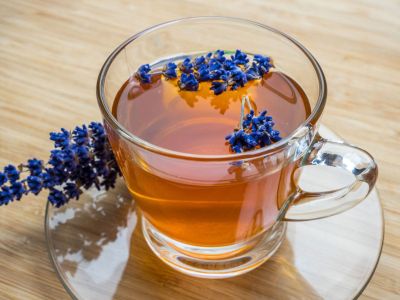What Plants are Good for Making Tea?
Although it is by no means comprehensive, the following is a list of plants that are good for making tea and which part of the plant to utilize:
Mint — Leaves, digestive and calming Passionflower — Leaves, relaxing and soporific Rose Hips — Buds once the bloom has expired, boost of Vitamin C Lemon Balm — Leaves, calming Chamomile — Buds, relaxing and good for a sour tummy Echinacea — Buds, immunity Milk Thistle — Buds, detoxification Angelica — Root, digestive Catnip — Leaves, calming Raspberry — Leaves, female reproduction Lavender — Buds, calming Nettles — Leaves, detoxification Red Clover — Buds, detoxification and purify Dandelion — Root, blood tonic Linden — Flowers, digestive and calming Lemongrass — Stalk, digestive and calming
In addition to these herbs, some other useful herbal tea plants include:
Calendula Basil Feverfew Horsetail Hyssop Lemon Verbena Motherwort Mugwort Skullcap Yarrow
How to Prepare Herbal Tea
In learning how to prepare herbal tea, first, choose a dry morning to harvest your herbal tea plants. The essential oils of the tea herb are highest in concentration before the heat of the day draws them out of the plant. Some herbs may be brewed directly following harvest, and some you may wish to dry. To dry herbal tea plants, there are a couple of different methods, but the primary concern is to use even, gentle heat. A single layer of sprigs can be placed on a tray of a food dehydrator or a microwave lined with paper towels can be used. For the microwave, set a timer for a minute or less and watch closely to avoid burning. Continue to microwave in short bursts, leaving the door open between to let moisture escape, until dry. A low oven of from 100-125 degrees F. (3 to -52 C.) can also be used and, again, leave the door ajar and check frequently. You can also air-dry herbs for tea, taking care to protect from dust by placing in paper bags pierced with holes prior to hanging. Avoid drying herbs in a basement or other musty area as they may absorb odors or get moldy. Once your herbal tea plants are prepared as above, make sure to label them. Whether you store in airtight containers or zip seal bags, dried herbs often look alike and need to have the variety and date printed on them as well as kept separate from others. Store dried herbs in a cool, dry place. Conversely, you may also choose to freeze herbs for tea in zip seal baggies or in ice cube trays covered in water. Herbal ice cubes can then be popped out and put into freezer bags for storage and are great to flavor iced tea or punch.
How to Brew the Best Plants for Tea
When using fresh herbs for tea, use one sprig (or tablespoon (15 mL.)) per person, and bruise by tearing or crushing to release the oils. Herbal teas readiness is led by taste rather than sight as they tend to have little color and take longer to brew than a traditional tea. Tea may brewed by either infusion or decoction. Infusion is a gentler process of releasing oils and works well with either fresh or dried herbs. Bring cold water to boiling in an enameled pot (metal may make the tea taste metallic) and add the tea. If using dried herbs for tea, use 1 teaspoon (5 mL.) per person and one “extra” for the pot. An infuser, mesh ball, muslin bag, or the like may be used to contain the herbs. Steep for five to 15 minutes, strain, fill a cup halfway with infusion, and top with boiling water. When using seed, roots, or hips, decoction is the method to use. First, crush the ingredients to release the essential oils. Use 1 tablespoon (15 mL.) for every 2 cups (480 mL.) of water. Bring water to a boil, add ingredients, and simmer for five to 10 minutes. Strain before drinking. There are endless combinations for herbal teas, so experiment and enjoy the aroma and emotional and health benefits of a homegrown herbal tea garden.
